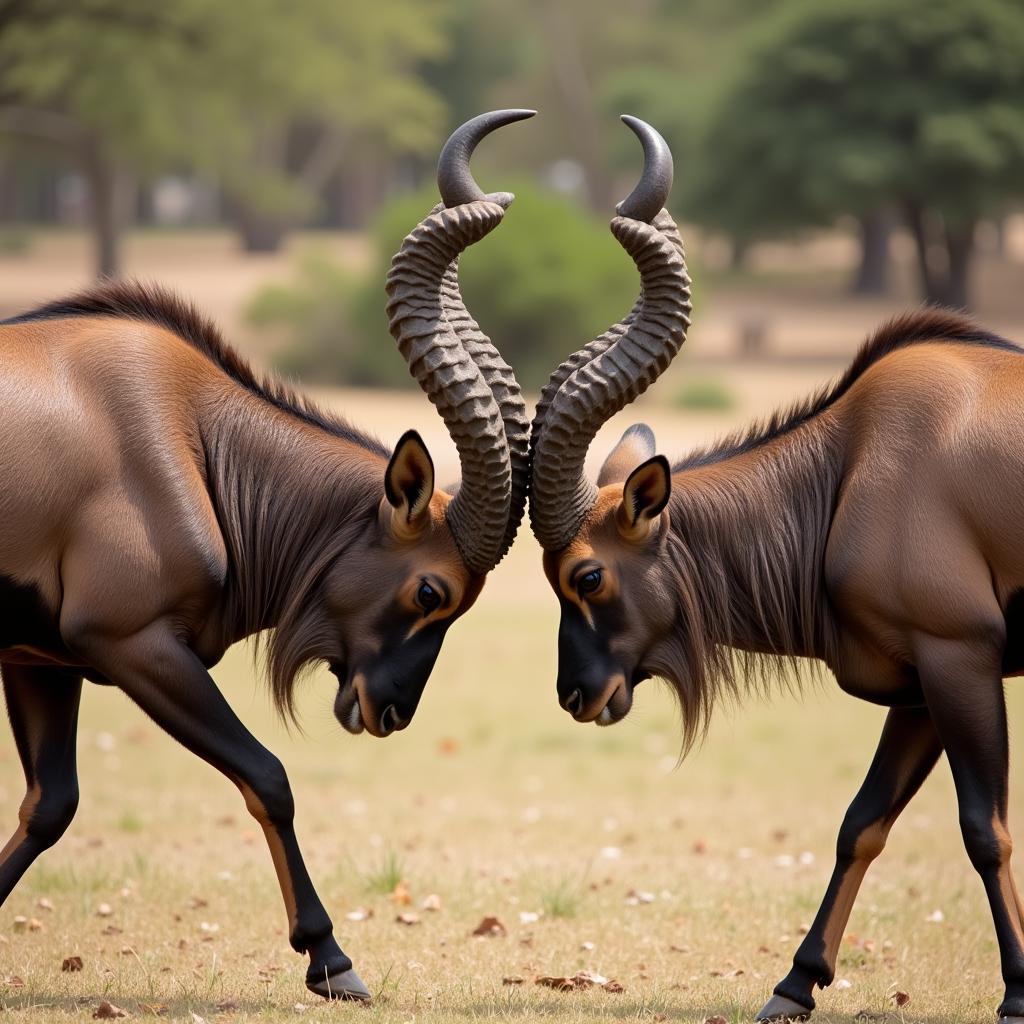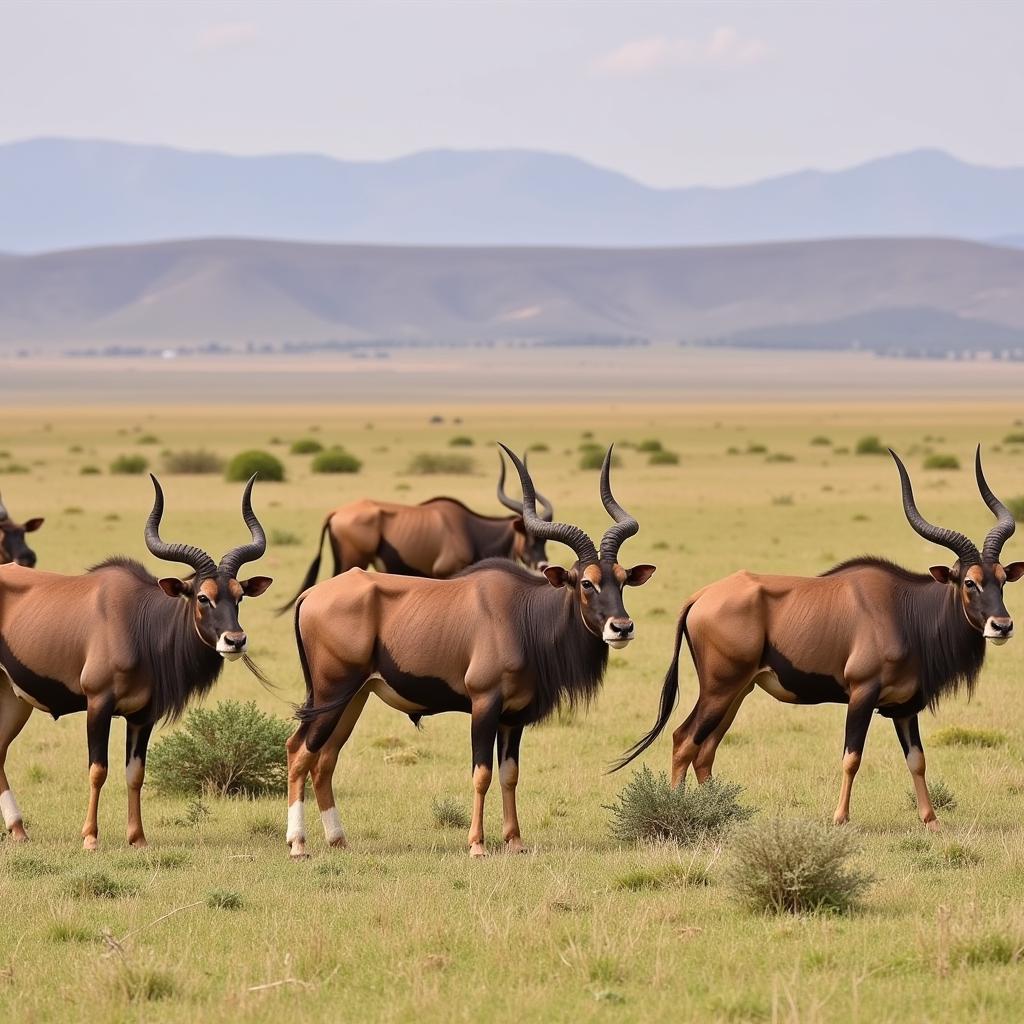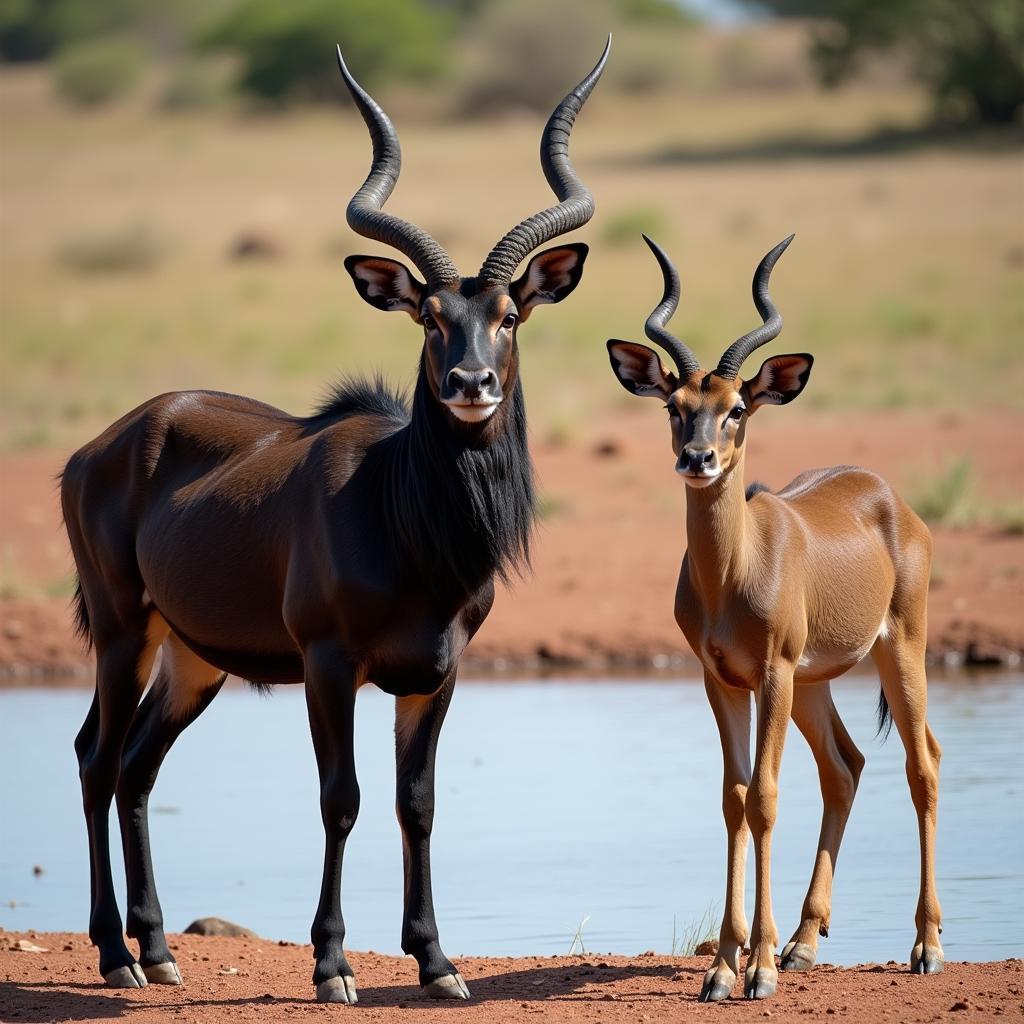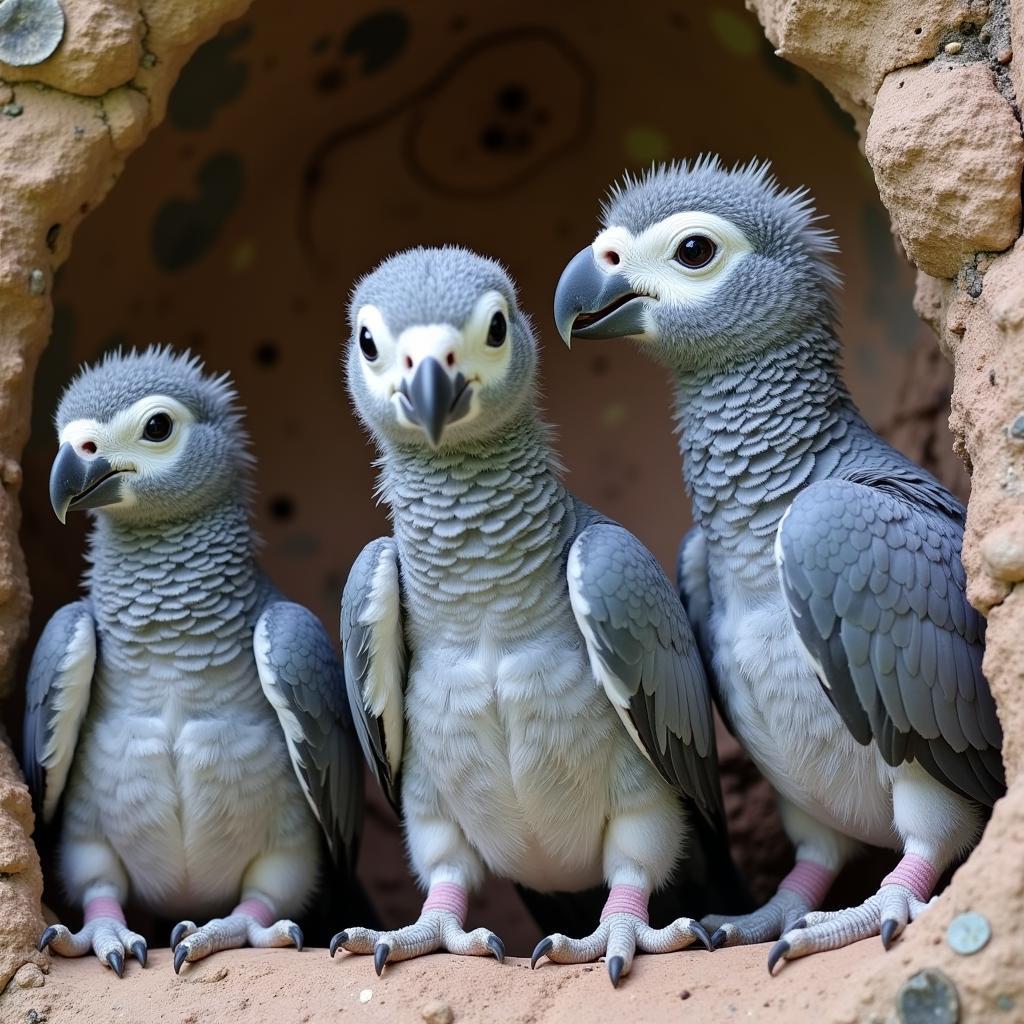Majestic African Antelope with Curved Horns: A Comprehensive Guide
The African savannas are home to a diverse array of antelope species, many easily recognized by their graceful forms and striking horns. Among them are several species renowned for their majestic curved horns, each with unique adaptations and captivating stories. This guide delves into the world of these fascinating creatures, exploring their physical characteristics, behaviors, habitats, and the challenges they face.
Unraveling the Mystery of Curved Horns
The most common question about these antelopes is simple: why the curve? These impressive structures, primarily composed of keratin (the same material as our nails and hair), serve various crucial functions. Primarily, they are formidable weapons used in intraspecies combat, particularly among males vying for territory or mates. The shape and size of the horns play a crucial role in establishing dominance and attracting potential partners.
 Male Antelope with Curved Horns Fighting
Male Antelope with Curved Horns Fighting
Beyond defense and display, some antelope species utilize their horns for foraging, digging for roots and tubers, or stripping bark from trees. These magnificent appendages are a testament to the power of natural selection, shaping the antelope’s form and behavior over millennia.
Iconic African Antelope Species with Curved Horns
Africa boasts a stunning variety of antelope species with curved horns, each possessing unique characteristics and ecological roles. Let’s delve into the lives of some of the most notable examples:
1. The Greater Kudu: Elegance Personified
Renowned for their majestic spiraled horns, male Greater Kudus sport the most impressive set, reaching lengths of over five feet. These solitary creatures are masters of camouflage in their woodland habitats, their vertically striped coats blending seamlessly with the dappled shade.
2. The Eland: Gentle Giant of the Plains
As the largest antelope species, Elands possess a distinctive feature – both males and females sport spiraled horns! Their horns are shorter and less dramatic than the Kudu’s, but equally effective for defense. These gentle giants roam open grasslands and savannas, often forming large herds.
 Eland Herd on the African Plains
Eland Herd on the African Plains
3. The Sable Antelope: Emblem of Grace
With their scimitar-shaped horns sweeping back over their shoulders, Sable Antelopes are a sight to behold. These elegant creatures prefer savanna woodlands and grasslands near water sources. Males are easily identifiable by their striking black coats, while females and juveniles sport a rich, reddish-brown hue.
4. The Nyala: A Study in Sexual Dimorphism
The Nyala exhibits one of the most pronounced examples of sexual dimorphism among antelopes. While females sport a reddish-brown coat and short, spiraled horns, males are significantly larger with a charcoal gray to black coat and long, twisted horns reaching lengths of over two feet.
 Nyala Male and Female at Waterhole
Nyala Male and Female at Waterhole
Threats and Conservation Efforts
Unfortunately, many antelope species with curved horns face an array of threats, primarily habitat loss due to human encroachment, agriculture, and infrastructure development. Poaching for their horns and meat also poses a significant danger, particularly for species with high commercial value.
Conservation efforts are crucial for ensuring the survival of these magnificent creatures. Protected areas and national parks provide safe havens, while anti-poaching patrols work tirelessly to combat illegal hunting. Sustainable land management practices are essential to minimize habitat loss and promote coexistence between humans and wildlife.
Exploring the World of African Antelope
From the majestic Greater Kudu to the elegant Sable Antelope, these creatures with their striking curved horns represent the captivating beauty and diversity of the African continent. By understanding the challenges they face and supporting conservation efforts, we can ensure that these magnificent animals continue to roam the savannas for generations to come.
FAQs about African Antelope with Curved Horns
1. What is the purpose of the curved horns on African antelope?
The curved horns serve multiple purposes, including defense against predators, establishing dominance among males, and attracting mates. Some species also use their horns for foraging.
2. Which African antelope has the longest curved horns?
The Greater Kudu boasts the longest horns among African antelope, with males possessing horns that can exceed five feet in length.
3. Are all African Antelope With Curved Horns endangered?
While some species, like the Eland, are classified as “Least Concern,” others, like the Mountain Nyala, are considered “Endangered” due to habitat loss and poaching.
4. What are some of the conservation efforts being made to protect African antelope?
Conservation efforts include the establishment of protected areas, anti-poaching patrols, community-based conservation programs, and sustainable land management practices.
5. Where can I see African antelope with curved horns in their natural habitat?
Several national parks and reserves across Africa offer excellent opportunities for observing these animals, including the Serengeti National Park in Tanzania, Kruger National Park in South Africa, and Etosha National Park in Namibia.
Explore More about African Wildlife:
For further insights into the fascinating world of African wildlife, be sure to check out these related articles:
Need Help Planning Your African Safari?
Contact us today! Our team of experts can help you create a customized safari experience that allows you to witness the majesty of African antelope with curved horns firsthand.
Call us: +255768904061
Email: [email protected]
Visit us: Mbarali DC Mawindi, Kangaga, Tanzania
We are available 24/7 to assist you.


